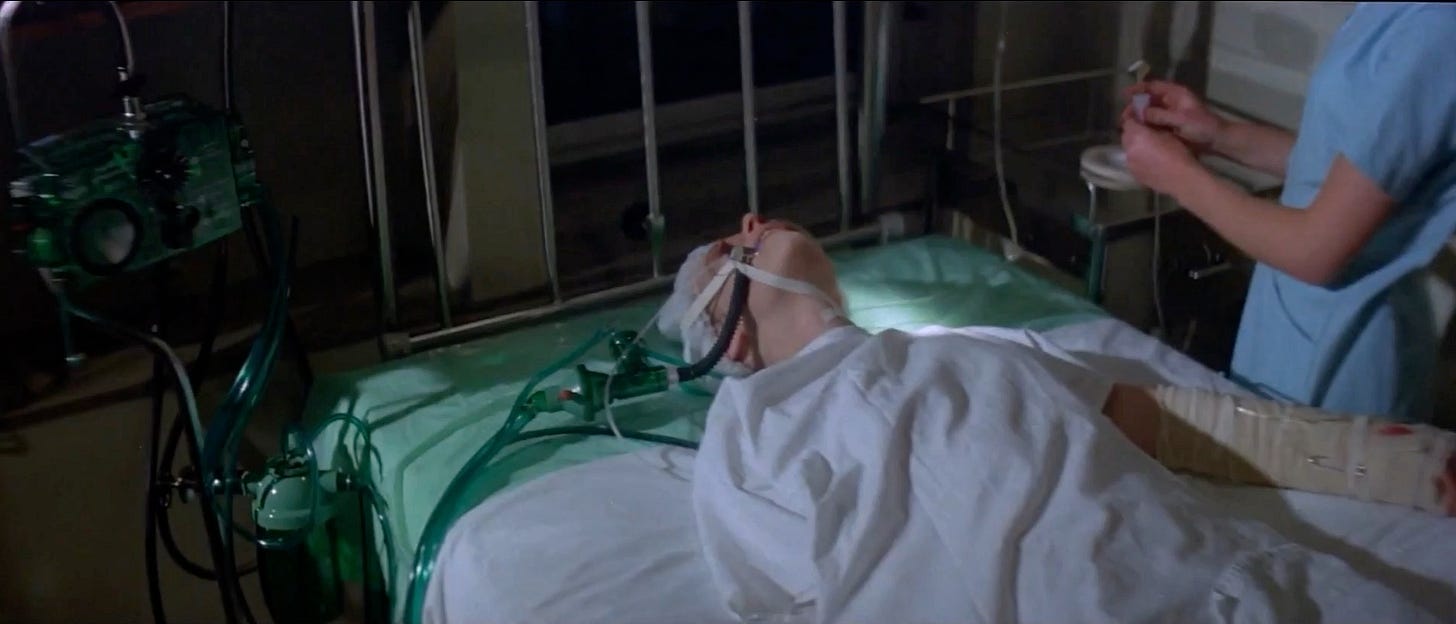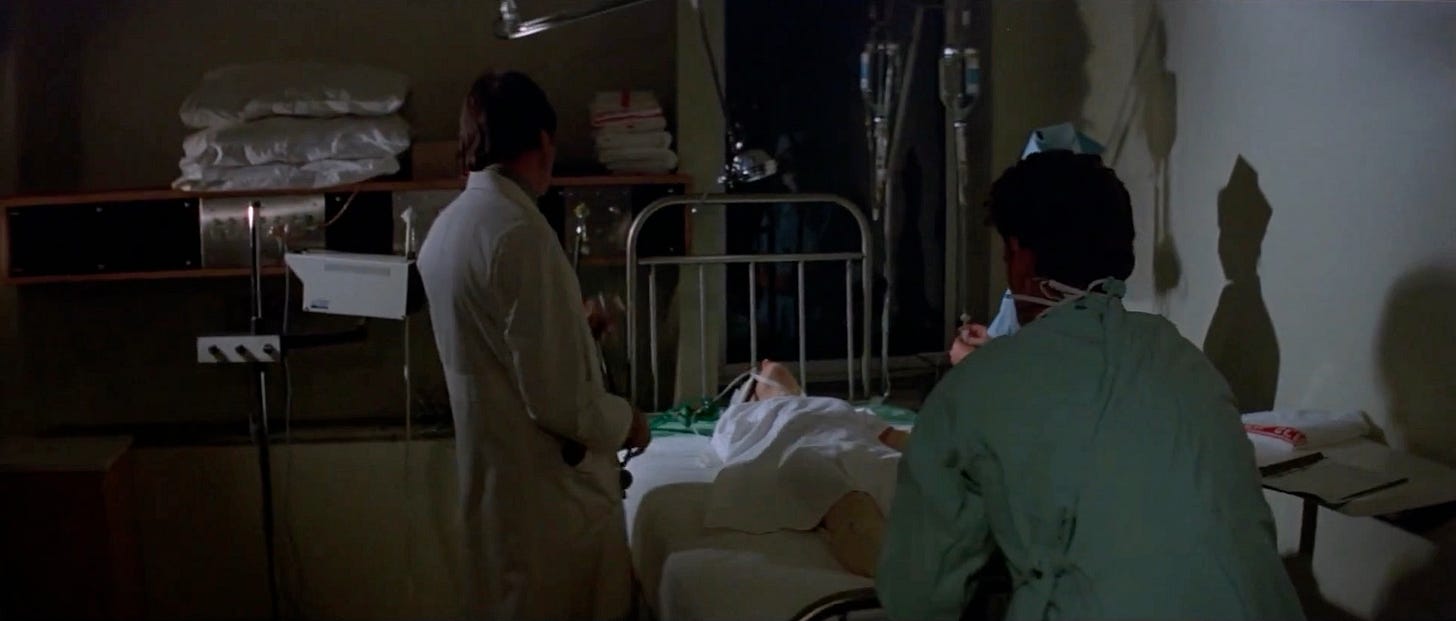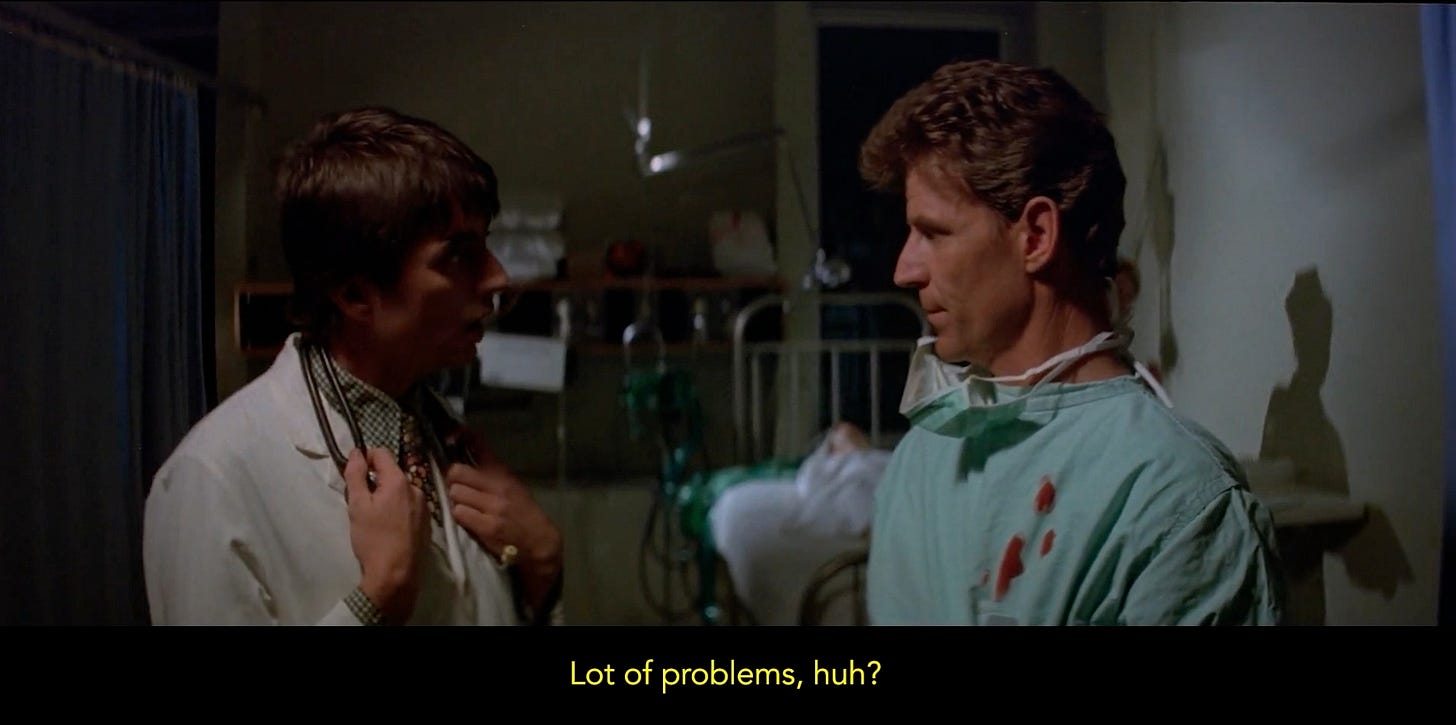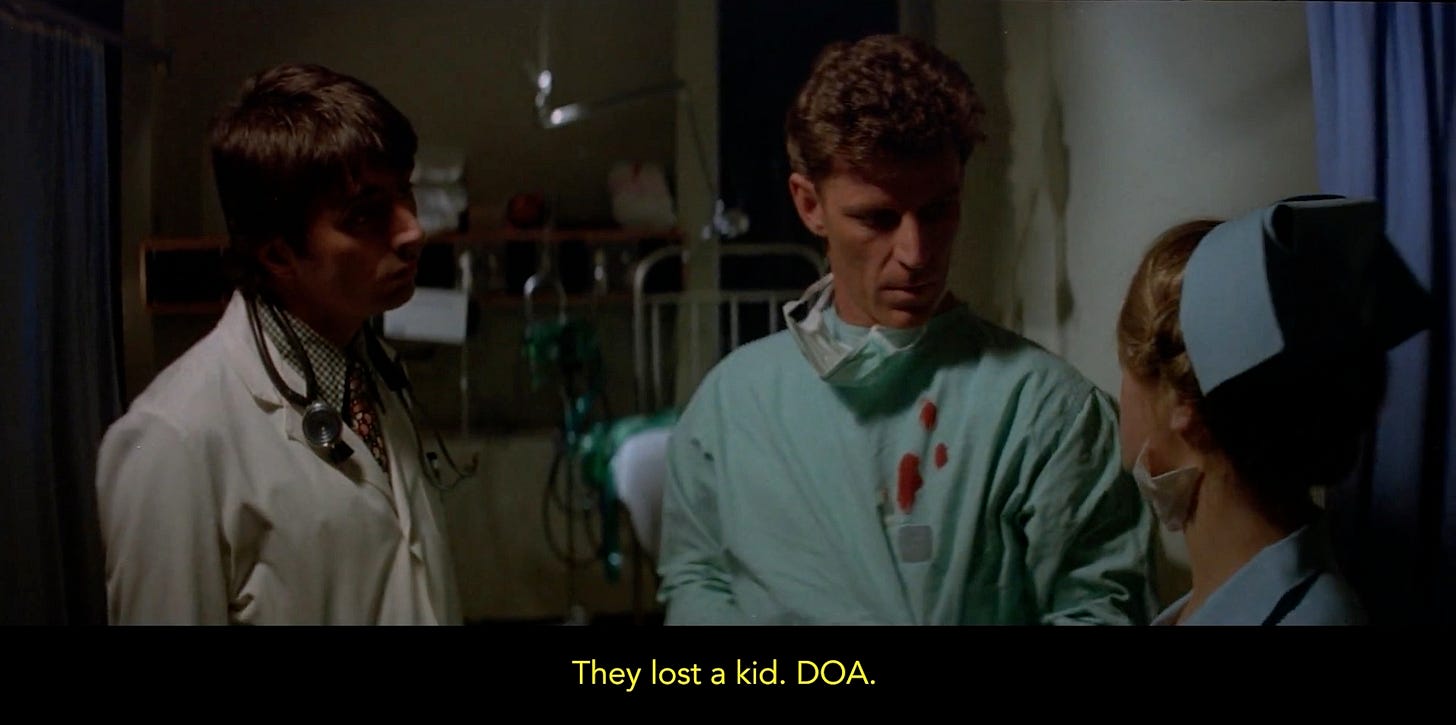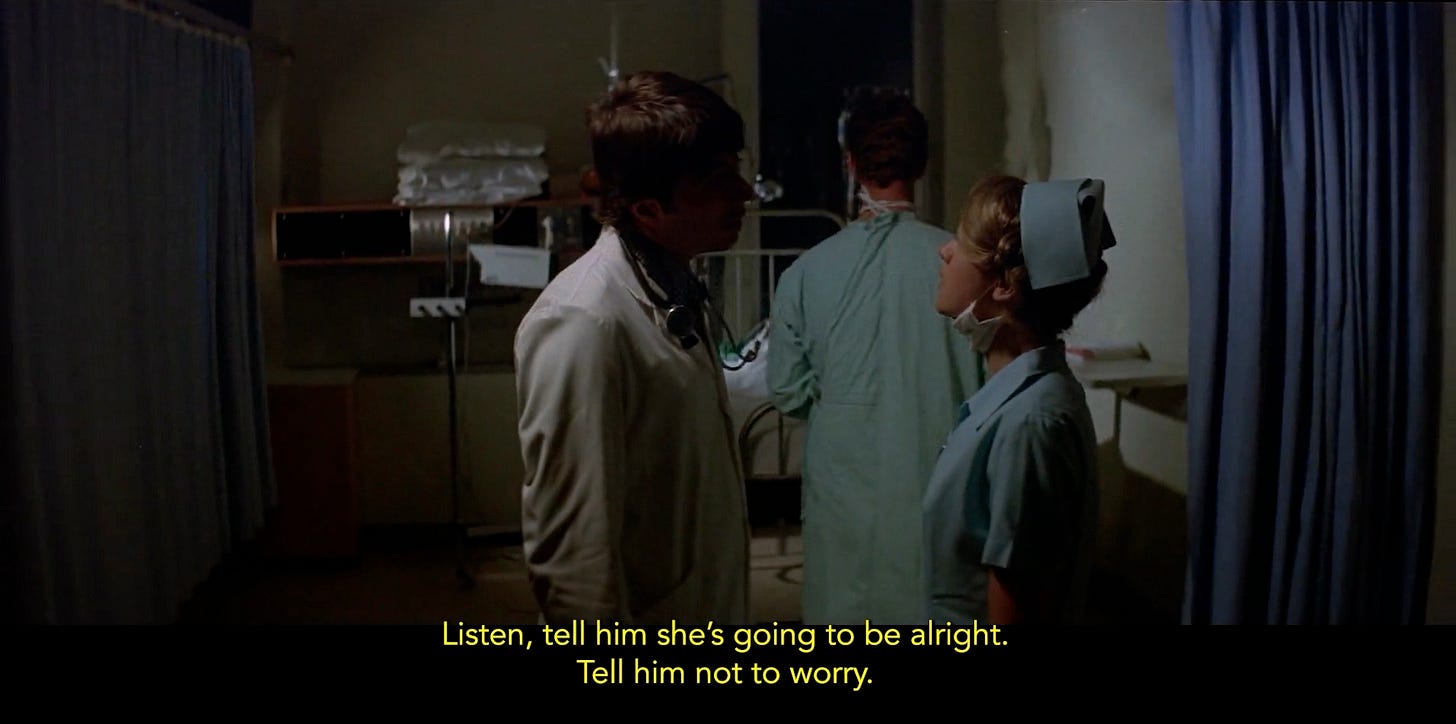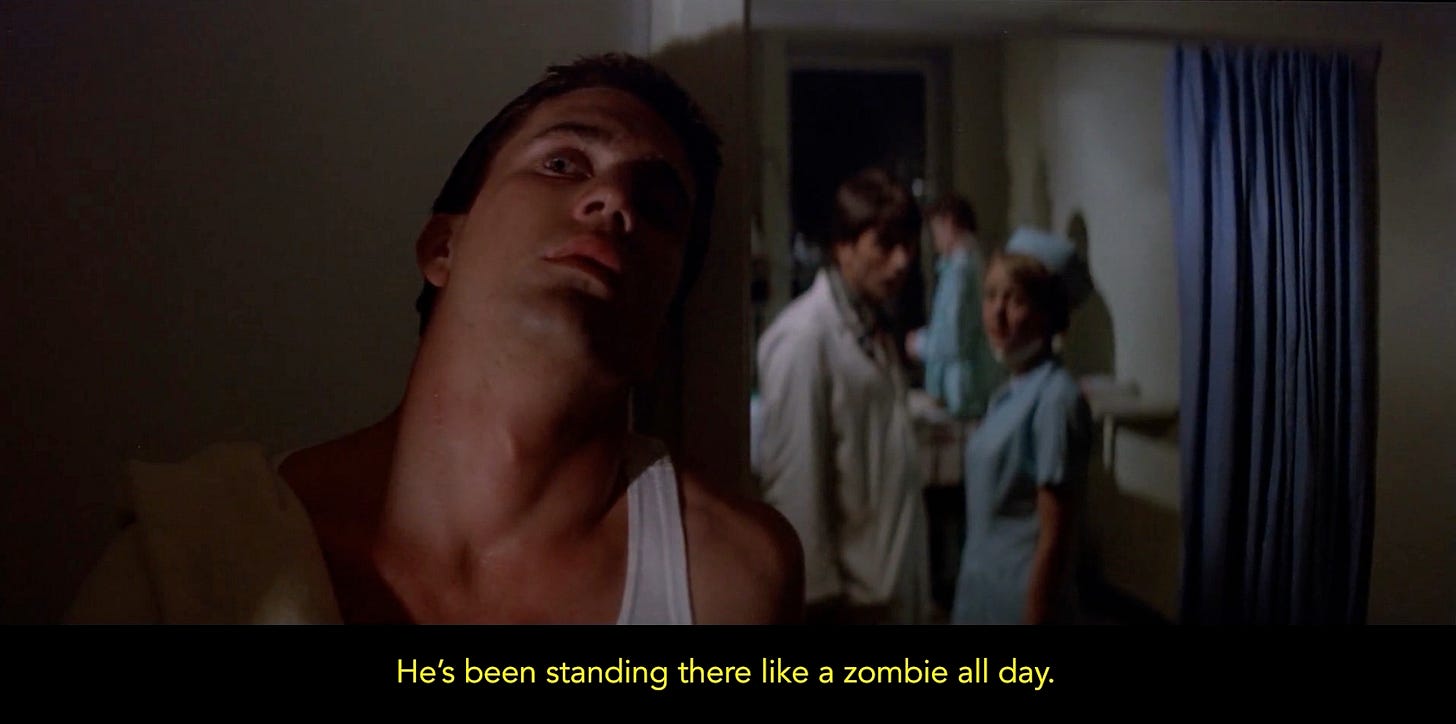How does MAD MAX use an invisible oner to make exposition more dramatic?
“I basically wanted to make a silent movie. With sound.”
— Director: Dr George Miller
MAD MAX
With Mad Max (1979), Director George Miller wanted “to make a film which [he] saw as pure cinema”. As he puts it: “I basically wanted to make a silent movie. With sound.”1
And you can see that ethos in why this hospital scene has been shot as a oner. Even though it has dialogue, its visuals tell the whole story: narratively and emotionally.
In the previous scene Jessie, Max’s wife, and his son are run over by Toecutter’s gang. They’re rushed to the hospital. And (seemingly) only Jessie has ‘survived’. We’re told this through simple visual language:
Max runs to the bodies → cut to an ambulance rushing → dissolve to the hospital
And in the hospital, we see it’s an adult body, not a child’s..
Incidentally, the shot of Max from afar echoes the iconic shot of Furiosa on her knees:

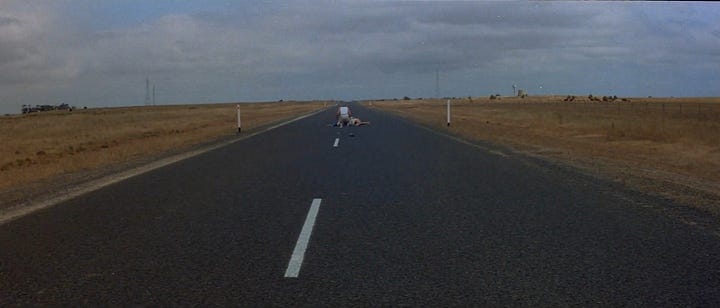
So what’s the dramatic purpose of the hospital scene? To motivate Max to seek bloody revenge against Toecutter’s gang (aka fridging2). But it would dramatically inert for a Doctor to simply tell Max that he’s lost his son and wife. So the narrative solution the writers have employed is to make Max eavesdrop on a discussion between two Doctors.
And (like with Jaws above) they’ve staged it in five setups/shots that are weaved together into something visually dynamic.
The first shot establishes the hospital and Jesse’s injuries. Note how the missing arm is facing camera (or, rather, not facing camera?)
The Doctor enters screen left, we pull back and we’re into a new ‘shot’. A more classic wide establisher. This could have been done with a cut, but it all flows so elegantly.
Note that even though the nurse is blocked, the hard-light source from screen left gives her a distinct shadow on the otherwise plain wall. It feels like a 3S in framing.
The doctors then peel away into a profile 2S (you can even see them glance down at their camera marks). Their blocking and the camera move motivated by their need for a quiet discussion. And their discussion is motivated by their profession, so it doesn’t feel like exposition (tho its telling us how bad it is). And it has an air of verisimilitude, probably due to Doctor George Miller’s experience working in E.R.
The framing changes to accomodate the nurse in a 3S. She drops a bomb shell:
Our heart sinks. And then, as the Doctor explains that they’re going to lie to Max, the camera starts pulling back - building a sense of dread.
And we ultimately find ourselves in this final frame:
The reveal that Mad Max has been eavesdropping is a final “oh shit” moment. We are surprised (both visually and narratively) while also feeling with him. Despite there being dialogue in the scene, the underlying dramatic purpose is communicated visually.
Personally, I also think doing this as a oner makes us feel empathy with Max, as it almost puts us inside his emotional point-of-view even if that POV is a sound perspective rather than a visual perspective.
Grips-wise, this looks like it has been shot on a small arm on a dolly. But happy to hear any thoughts from those more grip-minded!
POSTS IN THIS SERIES
IMDB
Dr George Miller interviewed in https://aso.gov.au/people/George_Miller_1/interview/
Fridging = “When a loved one is hurt, killed, maimed, assaulted, or otherwise traumatized in order to motivate another character or move their plot forward.” See: https://tvtropes.org/pmwiki/pmwiki.php/Main/StuffedIntoTheFridge



